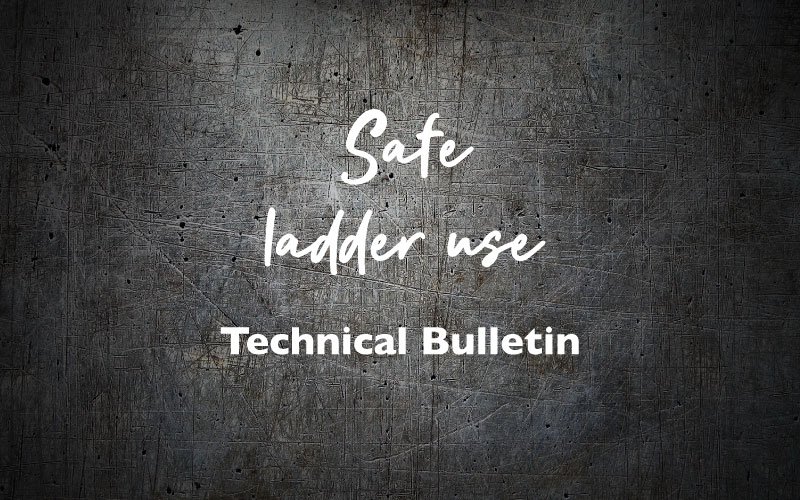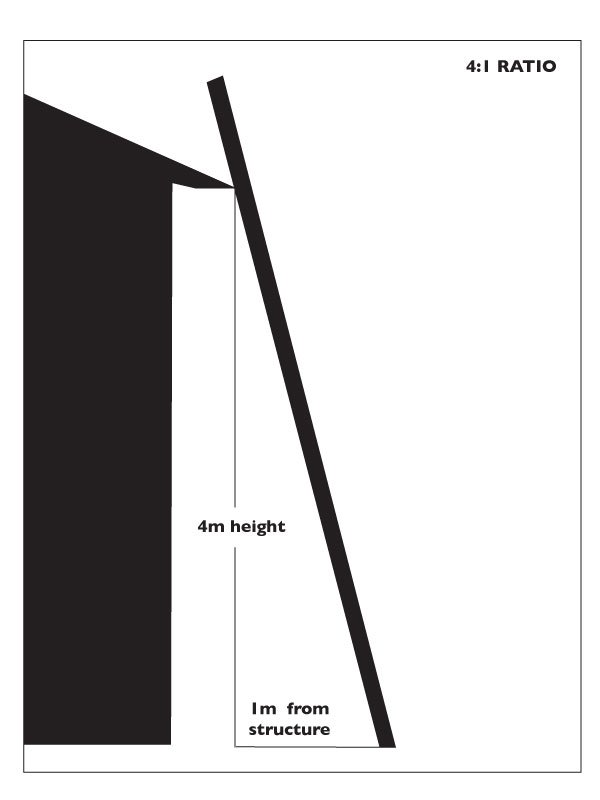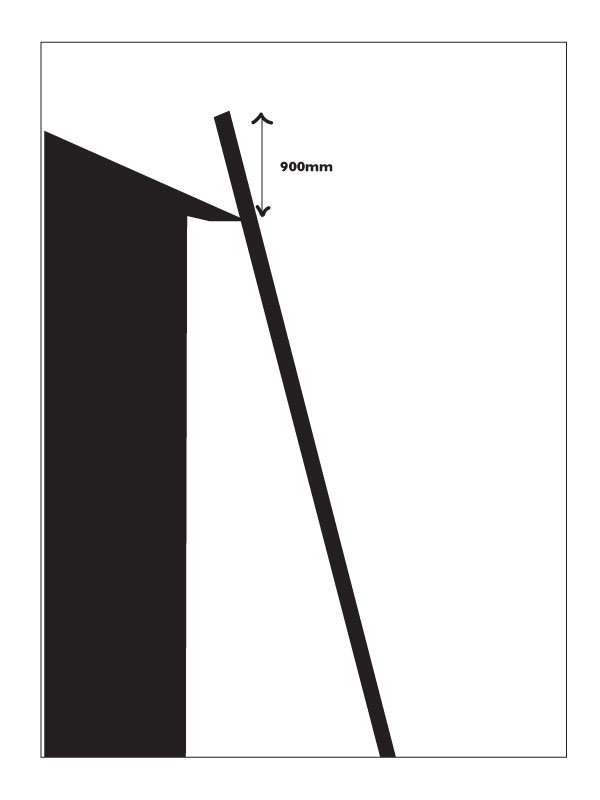

Ladders are an important and commonly used tool that many of us use daily. While simple in concept and design, using a ladder is risky and there are a few things you should know in order to use a ladder safely. While most of this is common sense, ladder falls are a very common reason why people end up in hospital, so it’s worthwhile taking some time to review the tips below.*
IS A LADDER THE RIGHT OPTION?
Firstly, it is recommended you assess the situation and see if there is a better way of doing the task that avoids the use of a ladder. Follow the steps in the table below starting at Level 1 to determine if other methods are more appropriate.
Level 1 – Work from the ground or on a solid platform (eg use long handled tools, tool extension poles or relocate the task to the ground).
Level 2 – Use a passive fall prevention device (eg EWP, sca olding or guardrailing).
Level 3 – Use a work positioning system (eg industrial rope access system or travel restraint system).
Level 4 – Use a fall arrest system (eg industrial safety net, catch platform or safety harness system other than a travel restraint system).
Level 5 – If the above measures are not reasonably practicable for the task, it may be appropriate to use a ladder, provided it is fit for purpose, appropriate for the duration of the task and set up in the correct manner.
Note that weather conditions can bring with them additional risks when using a ladder. Extreme heat can cause faintness or dizziness, rain or wind can make surfaces more slippery and unstable.
CHOOSING THE RIGHT LADDER
- If work is being done near electricity including neon signs, live wires, or powerlines then do not use a metal ladder
- Check that the ladder complies with Australian Standards (AS/NZS 1892)
- Check the weight capacity of the ladder and make sure you include additional items that you may be carrying (tool belt etc) when deciding if the ladder can take the weight
SETTING UP THE LADDER
- Inspect the ladder before use. If any parts are broken, worn, cracked or warped then you should not use it
- When setting up a ladder, make sure it is on a secure flat surface
- Ensure a 4:1 height to width ratio when positioning the ladder (eg – a 4 metre ladder must have the base positioned one metre from the edge of the structure)
- Remove items around the base of the ladder that may cause injury if a fall occurs
- Station a second worker at the bottom of the ladder to prevent it being knocked while you are working. If not possible, place a restricted zone around the base of the ladder eg – witches hats, taped off barricade
- An extension ladder should have at least 900mm between the top of the ladder and the structure
- Make sure any locks are in place
- Avoid positioning ladder in front of doors and windows that open outwards.
CLIMBING A LADDER
- Wear appropriate footwear (non-slip)
- Keep hands free of items when climbing up or down.
- Secure tools to tool belt
- Make sure no one else gets on the ladder, or works underneath the ladder
- Before climbing a ladder, stand on the bottom rung and jump on it to test the stability
- Face the ladder when going up or down, and maintain three points of contact at all time (one hand, two feet or two hands, one foot).
- Don’t skip rungs, as this can cause the ladder to tip to the side
- Never climb higher than 900mm from the top of the ladder, on a step ladder do not go higher than the second step from the top
- Never straddle a step ladder
- Do not use equipment that require two hands to operate while you are on the ladder
- If you find that you need to reach out to perform the required task, it is safer to climb down and readjust the ladder.




